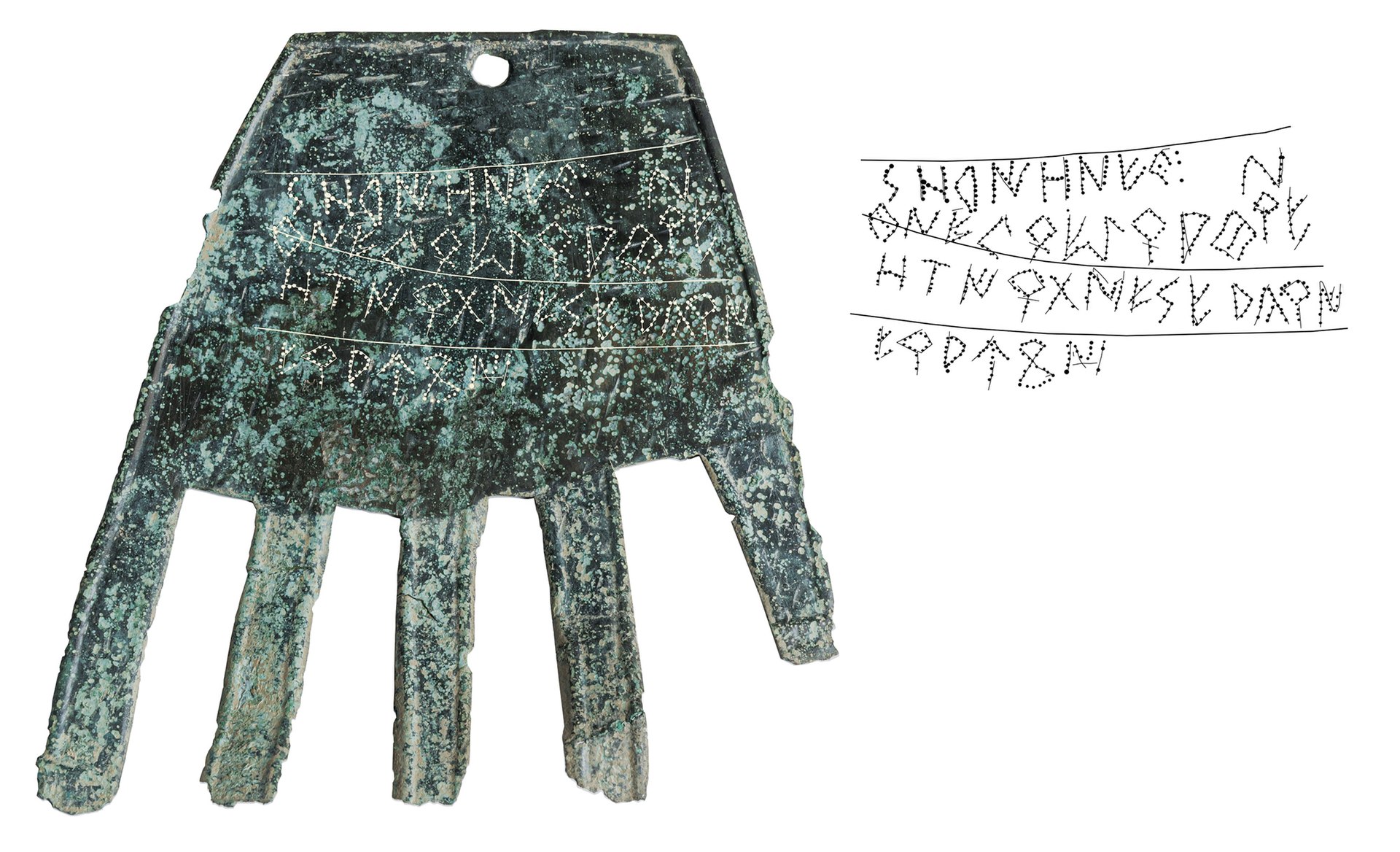In the heart of Navarra, a region rich in history and culture, an artifact has emerged that has the potential to rewrite our understanding of the origins of the Basque language. The Hand of Irulegi, a bronze sheet dating back to the 1st century BC, offers tangible evidence of the written use of a proto-Basque language, challenging previous assumptions about the linguistic history of the Iberian Peninsula.
The Discovery of the Hand of Irulegi
In June 2021, during excavations at the archaeological site of Irulegi, near the mountain of the same name, archaeologists unearthed a bronze sheet in the shape of a right hand. Measuring 14.3 cm in height and 12.8 cm in width, with a thickness of about 1 mm, the Hand of Irulegi features an inscription of four lines engraved on its palm. Initially, the artifact was not recognized for its importance, but further analysis revealed its extraordinary significance. (mediterraneoantico.it)
The Inscription and Its Meaning
The inscription on the Hand of Irulegi has been identified as part of the Paleohispanic writing system, with strong similarities to modern Basque. The first word of the inscription, "sorioneku," has been interpreted as an early form of the current Basque word "zorioneko," meaning "fortunate" or "auspicious." This suggests that the hand may have been used as an amulet or protective symbol, possibly hung at the entrance of a house to bring good fortune to its inhabitants. (english.elpais.com)
Implications for the History of the Basque Language
Before this discovery, it was widely believed that the Vasconic peoples did not have a significant written tradition before the arrival of the Romans. The Hand of Irulegi challenges this notion, indicating that a written form of the Basque language already existed in the 1st century BC. This artifact provides the first direct evidence of the written use of a proto-Basque language, suggesting a more literate and complex society than previously thought. (theguardian.com)
Archaeological Context
The Irulegi site, located at the foothills of the Pyrenees, was a strategic fortified settlement during the Iron Age. Archaeological evidence indicates that the area was inhabited by the Vascones, an ancient pre-Roman people considered ancestors of modern Basques. The discovery of the Hand of Irulegi in this context suggests that the Vascones possessed a writing system and a sophisticated material culture. (english.elpais.com)
Preservation and Study
Following its discovery, the Hand of Irulegi underwent a meticulous process of preservation and study. Currently, the artifact is displayed at the Navarra Museum, where it continues to be the subject of extensive research to fully understand its historical and linguistic significance. (cadenaser.com)
The discovery of the Hand of Irulegi represents a milestone in our understanding of the origins of the Basque language and the history of pre-Roman peoples in the Iberian Peninsula. This artifact not only enriches our knowledge of the past but also opens new avenues for future research on the spread and evolution of ancient European languages.
To further explore this topic, you can watch the following video illustrating the discovery and significance of the Hand of Irulegi:








Leave a Comment